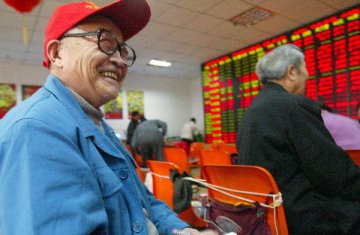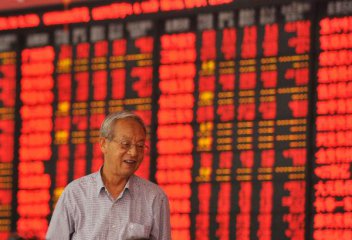
This year has not been a great one for Chinese stocks. In fact, it's been the worst in a decade.
The Shanghai composite, the mainland's major share average, ended the trading year at 2,493.90 — that was approximately 24.6 percent lower than its final close of 2017.
All 10 sectors of the index were down significantly in the year, with information technology being the worst performer as it fell 34 percent, according to Chinese financial services firm Wind Information. Even the best performing sector, utilities, dropped 11 percent.
That puts the Shanghai composite's performance at its worst since 2008, the year of the global financial crisis, when it plunged more than 65 percent.
Those dramatic losses were also seen elsewhere in China, with the Shenzhen composite plummeting about 33.25 percent and the Shenzhen component plunging around 34.44 percent in 2018 as compared to their last close of 2017. The Shenzhen component's performance was also its worst since 2008, when it dove 63 percent, according to Wind Information.
As shares on the mainland were pummeled, Hong Kong stocks performed a bit better. The Hang Seng index notched a decline of only 13.61 percent for 2018.
Trade war with Washington
Beijing's ongoing trade war with Washington dominated headlines for much of the year, with the Chinese markets taking hits throughout as authorities undertook a string of measures, such as cutting the amount of reserves held by banks, with limited success in calming traders.
Following a series of punitive tariffs that were slapped on each other's goods, U.S. President Donald Trump and Chinese leader agreed to a 90-day pause in tariff escalation in early December.
Looking ahead to 2019, one investor told CNBC's "Squawk Box" on Monday that the two economic powerhouses would likely strike a trade deal.
Marc Franklin, a senior portfolio manager at Conning Asia Pacific, said there would likely be three aspects to such an agreement.
Firstly, he said, there would be a reduction in import tariffs on certain U.S. goods. Secondly, investors should expect pledges to buy greater amounts of U.S. agriculture and energy products. Thirdly, he said there's likely to be a potential deferral — but not a cancellation — on certain aspects of China's push to become a world leader in high-tech manufacturing, its so-called Made in China 2025 policy.
Domestic economy woes
Beyond its trade skirmish with the U.S., China's own economy has also displayed signs of stuttering, with its manufacturing sector in December contracting for the first time in more than two years, according to government data.
The country's official manufacturing Purchasing Managers' Index (PMI) came in on Monday at 49.4 — lower than the 49.9 analysts expected in a Reuters poll. A reading above 50 indicates expansion, while a reading below that signals contraction.
Even before the escalation in trade tensions with the U.S. this year, Beijing was already trying to manage a slowdown in its economy after three decades of breakneck growth.
"The toolbox is becoming emptier and emptier" for Chinese authorities, Frederic Neumann, co-head of Asian Economics Research at HSBC, told CNBC on Monday.
Source: CNBC





















Latest comments